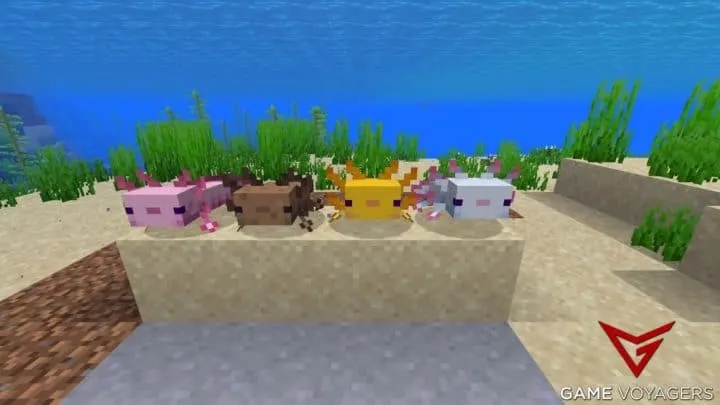Minecraft’s Axolotls are perhaps one of the most adorable new creatures added to the game in the 1.17 version update. Since then, we’ve received the 1.18 version update, which has changed many aspects of Axolotls compared to its previous version.
So it’s only natural that you might be confused regarding where to find these majestic creatures and how you can go about taming them after the updates.
Axolotls are adorable amphibians found in Lush Cave biomes and are inherently hostile toward most other aquatic mobs. They appear in five distinct colors: pink, brown, yellow, cyan, and blue. They can be carried using buckets of water and can even have leashes made of rope attached to them.
They are highly attracted to buckets of tropical fish and will breed if both the breeding Axolotls are fed a bucket of tropical fish. Through this guide, we detail every facet of Axolotls you need to know to find, tame, feed, and breed Minecraft Axolotls.
Where to find Minecraft Axolotls?
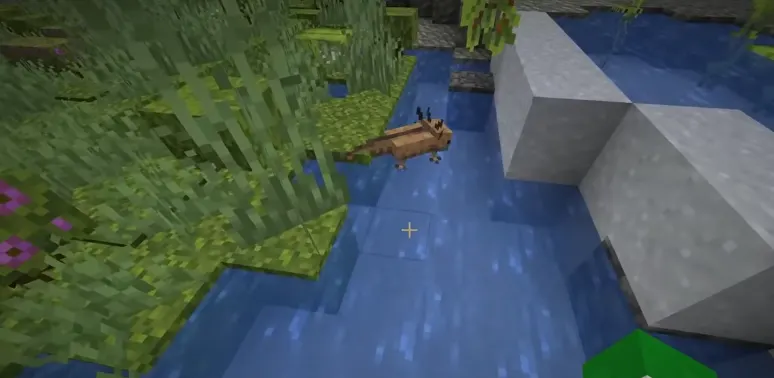
In comparison to their real-world counterparts, Minecraft Axolotls are simple to find. You will usually find them spawning in Lush Cave biomes in the water next to clay. Thankfully, around a quarter of the underground caves within Minecraft are Lush Caves; thus, it is particularly easier to find Axolotls.
An easy method to locate a Lush Cave would be to seek out Azalea Trees. This is because most underground spaces beneath Azalea Trees will be Lush Caves.
Remember: The location where we mentioned Axolotl spawn is based on information from version 1.18 of the game. And there were different spawn conditions back in version 1.17 that no longer apply.
How many types of Minecraft Axolotls are there?
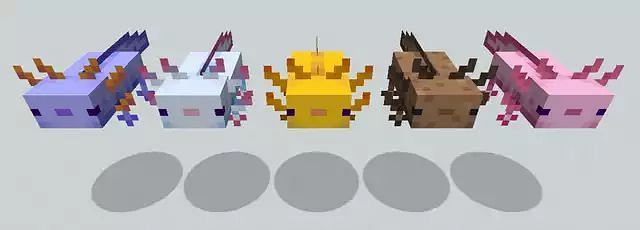
The answer to this question is simple. There are currently five different types of Axolotls that are present in Minecraft. These include the following:
- Leucistic (The Pink Axolotls)
- Wild (The Brown Axolotls)
- Gold (The Yellow Axolotls)
- Cyan
- Blue
The first three types of Axolotls, Leucistic, Wild, and Gold, are the common variants and can be found naturally in spawn locations. However, the Cyan and Blue Axolotls are rare. To obtain Cyan and Blue Axolotls, you must breed Axolotls.
There is a 1/1200 chance that you might obtain a Cyan or Blue Axolotls due to breeding. Otherwise, there is a 50-50% chance the Axolotl’s child will be the same color as their parent.
How to stop Minecraft Axolotls from despawning?
Unlike most cows and chickens in Minecraft, who, after their initial spawn, never despawn, the Axolotls begin to despawn if you walk away from their location a set distance. So if you want to make sure that the Axolotls that you spent so much time tracking down do not despawn, then note the following:
- Make sure to acquire a bucket
- Fill the bucket with water
- Fill the bucket full of water with the Axolotl that you wish not to despawn
- Release the Axolotl out of the bucket
And voila! That’s all there is to it. Once the game recognizes that you picked up the Axolotls in your water bucket, it becomes a fixed creature within the game space and no longer despawn.

How to breed Minecraft Axolotls?
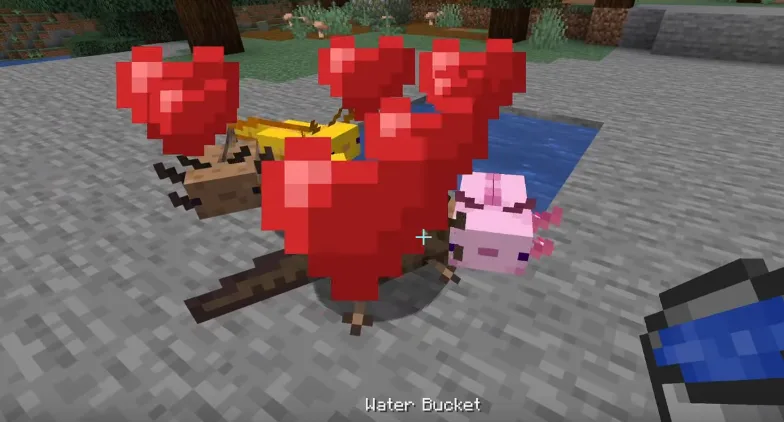
To breed Axolotls, there are a few things that you need to make sure of. First, you must ensure you have a bucket of Tropical Fish with you. Tropical fish can also be found in warm, lukewarm, deep lukewarm ocean biomes and lush caves.
Secondly, you must bring two adult Axolotls together in the same area. You can do so by leading the Axolotls by a rope, acting as a leash, or drawing them to your location by having the bucket of tropical fish out. The Axolotls will be attracted to the tropical fish and will follow you to your chosen location.
Thirdly, you must activate the Love Mode for both of the Axolotls. This can be done by feeding both of them with a bucket of Tropical Fish. Once in Love Mode, the Axolotls will naturally breed, and a few seconds later, a baby Axolotl will be born.
Finally, the baby Axolotls can mature into adults in around 20 minutes. However, if you’re not in the mood to wait, you can speed up their growth by feeding them Buckets of Tropical Fish. This reduces their overall time of growth by 10%.
Do the Minecraft Axolotls attack?
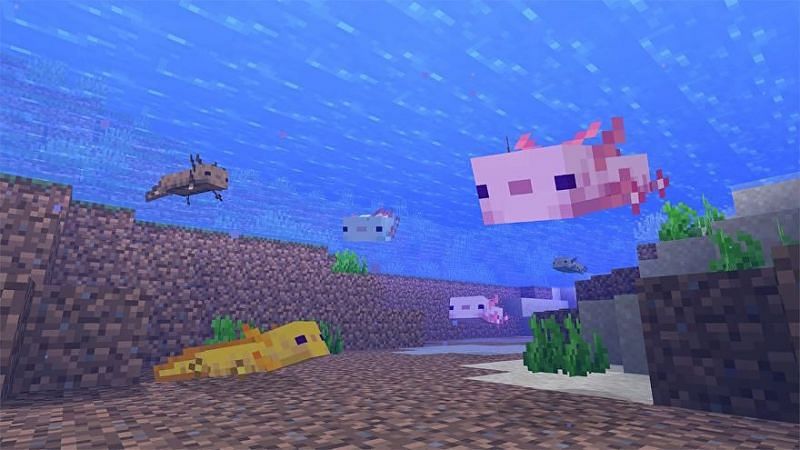
The Minecraft Axolotls are passive towards you, the player character. However, if they are put up against any other aquatic creature, then they will show no mercy. The only exception to this rule, perhaps, are dolphins and turtles; even Axolotls aren’t ready for that heat.
This killer instinct in Axolotls is so strong that they are even willing to attack Drowners. If there are many Axolotls, you can see them swarm against their target and annihilate it in seconds.
Perhaps the best feature of the Axolotls is that they prioritize their aggression against creatures that are hostile toward the player character. So if you find yourself in a pickle against a powerful enemy, head towards a bunch of Axolotls, and they’ll rush to your aid. And they said dogs were man’s best friend.
The Axolotl deals 2 points of damage per attack. And once it has killed an enemy mob, it will remain dormant for 2 minutes before re-engaging with its next target.
Why do Minecraft Axolotls freeze when they are attacked?
You might have noticed that when Axolotls get attacked a few times, they instantly freeze. My friends, this isn’t a bug, but the Axolotl’s natural survival instincts arise and cause them to play dead.
Within the Axolotl’s play dead state, all hostile creatures begin to ignore them. And during this state, the Axolotls rely on their passive healing ability to regenerate health.
Note: Axolotls regain health 1 health point every 5 seconds. And when it plays dead, it stays in that state for 10 seconds before initiating its attacking phase again.
It is important to note that Axolotls are water-loving and do not stray too many blocks away from them. Nonetheless, they make for adorable pets and valiant comrades in battle. Their regeneration and play dead make them exceptionally hardy, and they’re willing to aid you when you need it the most.

